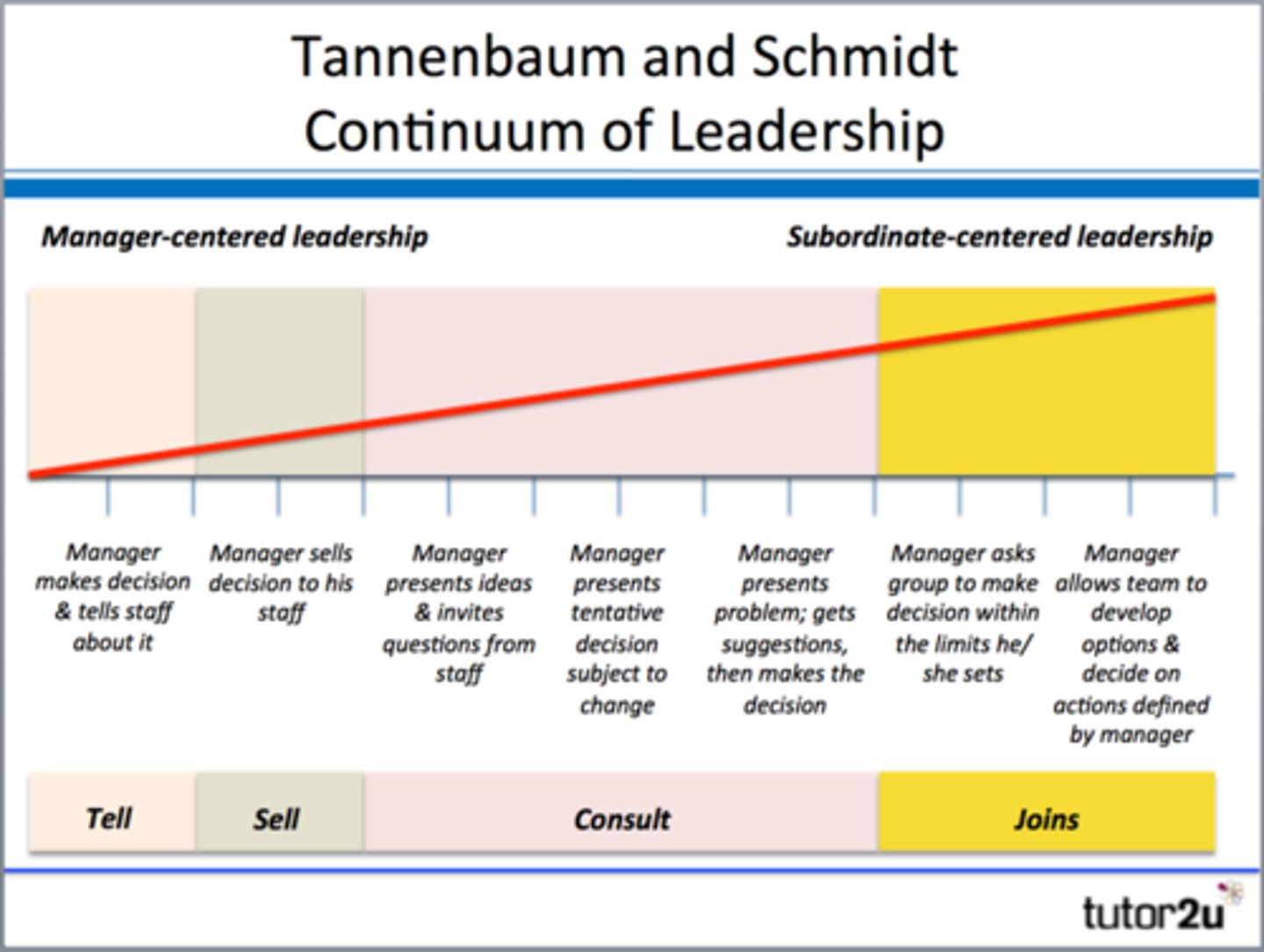Business - 3.2 - Section 2 -managers, leadership and decision-making
1/31
There's no tags or description
Looks like no tags are added yet.
Name | Mastery | Learn | Test | Matching | Spaced |
|---|
No study sessions yet.
32 Terms
What is a manager?
They enact the plan, use their authority, manage risks, have subordinates
What is a leader?
They inspire people, build relationships, take risks, have followers
What is the autocratic (authoritarian) type of management/leadership?
Power, control and decision-making are retained at the top of an organisation and communication with the workforce tends to be limited
What are the advantages of an autocratic management and leadership style?
The decisions are made quickly and easily
What are the disadvantages of an autocratic management/leadership style?
- The communication with the workforce tends to be non-existent
- They do not consult the staff only give orders
What is a paternalistic type of management/leadership style?
When employees are consulted, but decision-making remains formula at the top. Leaders decide what is best for their employees
What are the advantages of a paternalistic management/leadership style?
- Decisions are in best interest of employees
- They explain their decisions
What are the disadvantages of a paternalistic management/leadership style?
- Employees have a say but decisions still lay heavily on the top
- Takes longer to make decisions
What is a Democratic type of management/leadership style?
It involves a two-way communication and considerable delegation
What are advantages of a democratic type of management/leadership style?
- They consult others about reviews, and give reasons
- There is a participation of workers in decision-making
What are the disadvantages of a democratic type of management/leadership style?
- decision-making processes may be slower because of the need to consult and discuss
What is a laissez-faire type of management/leadership style?
A style that abdicates responsibility and essentially takes a hand off approach
What is an advantage of the laissez-faire type of management/leadership style?
- If employees are highly skilled this method can be effective
What is a disadvantage of the laisser faire type of management/leadership style?
- May lack focus and coordination
- Can be less effective if staff are not skilled
What is the Tannenbaum Schmitz continuum?
It is a model of leadership that shows the relationship between the level of freedom in relation to decision-making.

What is at the left side of the model?
Boss centred leadership
What is on the right side of the model?
Area of freedom for subordinates
What is the first section on the left side of the model?
Tell- leader identifies problems, makes decisions and announces to subordinates, expects implementations
What is the second section on the left side of the model?
Sells- leader still makes decisions, but attempts to overcome resistance through decisions and persuasion
What is the third section in the middle of the model?
Consults- leader identifies problem and presents it to the group, listens to advice and suggestions before making a decision
What is the last section of the model on the right side?
Joins- leader identifies the problem and passes on the solving and decision-making to the group (which managers part of)
What is intuition decision making?
Decisions based on hunches
What is scientific decision making?
decision making based on data
Advantages of scientific decision making
Data driven so evidence based
Removes some subjective judgement from decisions
Disadvantages of scientific decision making
May still rely on assumptions
Doesn't guarantee the correct decision
Can ignore business experience people have
What is an opportunity cost?
The cost on missing out on the next best alternative.
How do you calculate the Expected Value (EV) on a decision tree?
Probability x Expected revenue
How do you calculate the Net gain on a decision tree?
EV - cost
Benefits of using a decision tree
- Analyses possible options and identifies opportunity cost
- Injects quantitative analysis into decision making process
- Useful when similar situations have been faced
Drawbacks of using decision trees
- The accuracy of estimations can be inaccurate
- Managerial bias (person who comes up with probabilities may want something to be picked)
- Can lead to qualitative factors being ignored
What are the main factors which influence decision making and what to they mean?
Mission- The business purpose and how it wants to be seen
Objectives- Help the business accomplish the mission
Ethics- How to keep people safe
The External Environment- Competitors, trends can force a business to make changes and decisions
Resource Constraints- Managers may not be able to do something based on amount of resources
What is stakeholder mapping?
A visual representation of how stakeholders are connected and their power and interests in the business.